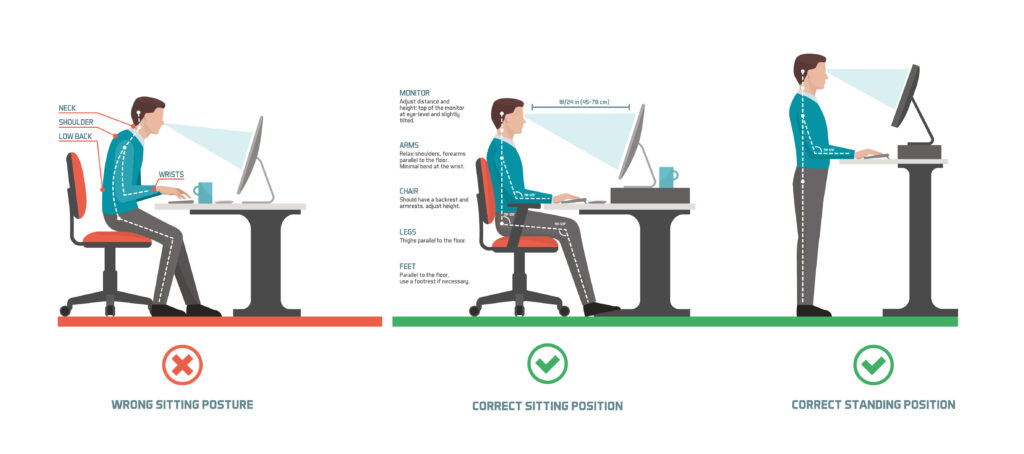Standing Posture
Millions of people spend a good deal of their time on their feet. Standing work, including bending, lifting, carrying and reaching can be tough on the back especially if proper body mechanics are not being used. Use the following guidelines to minimize the risk of injury to your back when doing standing work:
Avoid standing in one position for prolonged periods of time. Change your position as often as you can. This will not only help relieve stress on your spine, it also helps increase circulation and decrease muscle fatigue. When you can, stretch. Gentle stretching exercises during a break can help ease muscle tightness.
Be aware of your posture. Are you standing correctly? Check and double check throughout your day. Make sure the surface you are standing on is firm and level.
If possible, lean on a solid support. This can help reduce fatigue during long periods of standing.

Before Lifting
When Lifting
Over-reaching
Sitting Posture
Whether sitting at a desk or at home watching television, good body mechanics are still important to keep in mind. For deskwork, consider investing in an ergonomically enhanced chair. What does proper sitting look like?
Place your buttocks at the back of the seat while maintaining a small space between the back of your knees and the seat of the chair.
Place your feet flat on the floor with your knees bent at a 90° angle.
Pull your shoulders back and lift your chest.
Lift your chin until it is level and relax your jaw and mouth.
